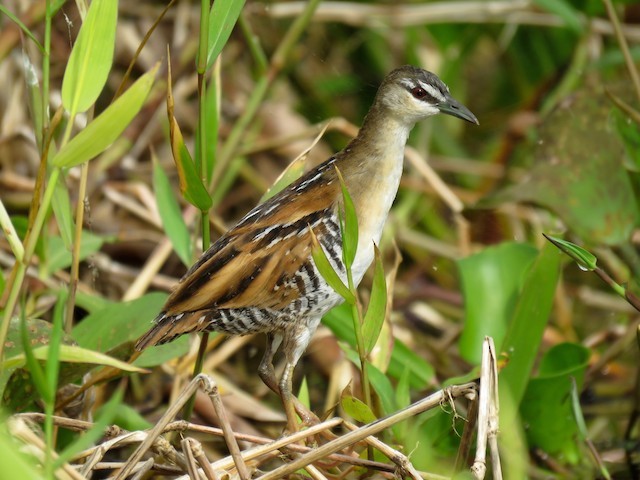Birdfinding.info ⇒ Secretive and hard to observe, but locally common in a few parts of its large range. Most sightings of Yellow-breasted Crake occur at a handful of widely scattered locations: in Brazil, the Tanquã reservoir of the Rio Piracicaba in São Paulo; in Costa Rica, Laguna Mónico and Medio Queso at Caño Negro Wildlife Reserve; in Honduras, around Lago Yojoa at Los Naranjos Eco-Archaeological Park and El Cortijo del Lago; on Jamaica, Black River Morass and Robin’s Bay; on Puerto Rico, Caño Tiburones, Barceloneta, Laguna Cartagena, and Humacao Nature Reserve; and on Trinidad, the Caroni ricefields.
Yellow-breasted Crake
Hapalocrex flaviventer
Tropical wetlands of Middle and South America.
Widely but patchily distributed in freshwater marshes at low elevations across the Neotropics from Mexico and the West Indies to central Argentina. Difficult to detect, so its occupation of suitable habitat across its large range is likely much more extensive than the reported records indicate.
In the West Indies, known from a few sites in western Cuba, Jamaica, the Enriquillo Depression of Hispaniola, Puerto Rico, Trinidad, and Tobago.
In Middle America: reported from widely scattered points along coastal both plains from Sinaloa and Veracruz south to Panama.
In northern South America: the northern Colombian depression, the Llanos, and the Guianan coastal plain east to Amapá; also reported from the Pacific lowlands of Ecuador.
In eastern South America: northeastern Brazil from northern Maranhão east to northern Bahia; southeastern Brazil from Brasília and eastern Mato Grosso do Sul south through Minas Gerais to the coastal lowlands from Espírito Santo to Rio Grande do Sul; and the Paraguayan Chaco south through Argentine Mesopotamia to Buenos Aires Province and coastal Uruguay. Also several scattered records from the interior of Amazonia (mostly northern Bolivia and Rondônia) and the Pantanal.

Brazilian records from © WikiAves
Identification
A sparrow-sized rail with a buffy or yellowish neck and breast, and a unique, angry-looking facial pattern: a bold white, broken eyebrow, framed by a blackish crown and strong black eye-stripe that forks at the eye.
Back and wings are rich buffy-brown or chestnut with contrasting black and white streaks and bars. The flanks are barred black and white.
Bill is black or blackish-olive, slightly curved, and spike-like—proportionately long and heavy for a crake.
Legs are yellow-orange and proportionately large. In flight, they hang down noticeably below the body.
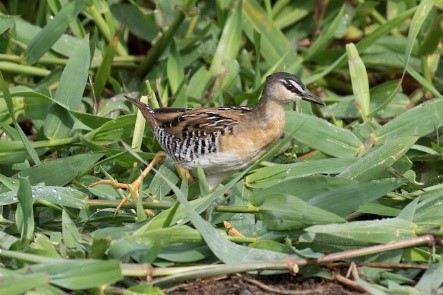
Yellow-breasted Crake. (Tanquã, Piracicaba, São Paulo, Brazil; November 18, 2017.) © Steven Whitebread

Yellow-breasted Crake. (Medio Queso Wetlands, Los Chiles, Costa Rica; March 10, 2019.) © Daniel Irons

Yellow-breasted Crake. (Tanquã, Piracicaba, São Paulo, Brazil; December 5, 2015.) © Cláudia Brasileiro
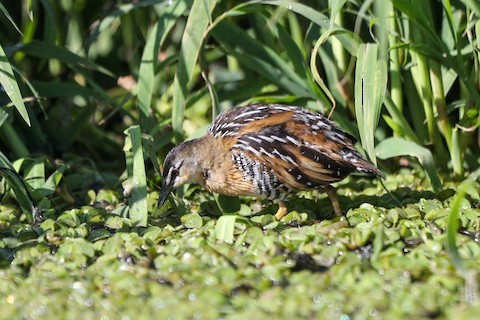
Yellow-breasted Crake, showing rich black, white, and chestnut pattern on upperparts. (Tanquã, Piracicaba, São Paulo, Brazil; August 29, 2019.) © Ian Thompson
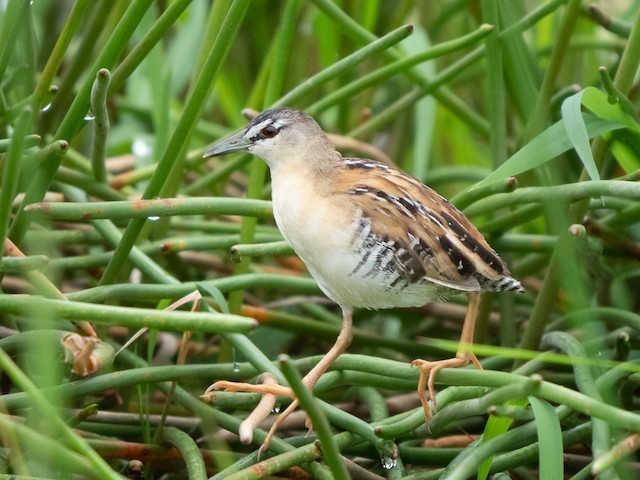
Yellow-breasted Crake. (Medio Queso Wetlands, Los Chiles, Costa Rica; July 4, 2018.) © Chris Fischer,
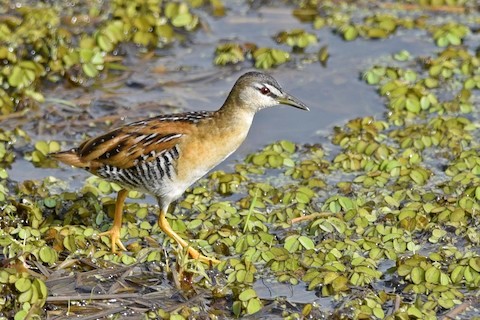
Yellow-breasted Crake. (Medio Queso Wetlands, Los Chiles, Costa Rica; March 10, 2019.) © Daniel Irons

Yellow-breasted Crake. (Medio Queso Wetlands, Los Chiles, Costa Rica; March 3, 2020.) © Janet Rathjen
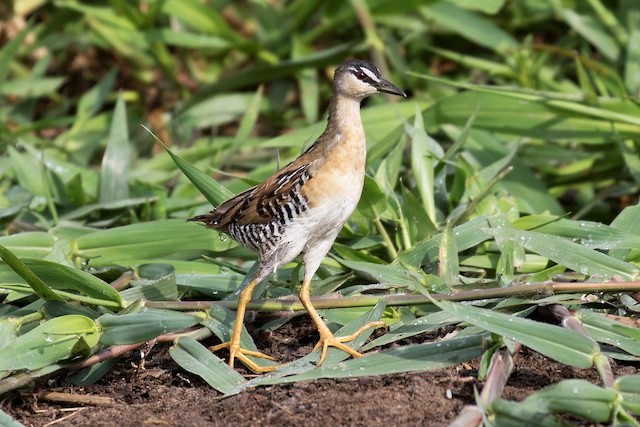
Yellow-breasted Crake. (Tanquã, Piracicaba, São Paulo, Brazil; November 18, 2017.) © Steven Whitebread
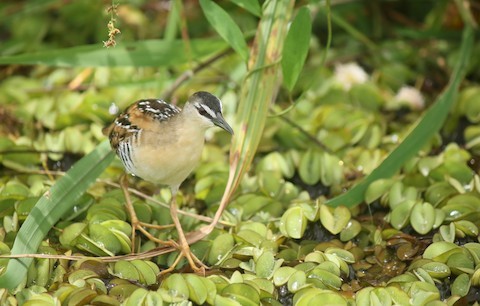
Yellow-breasted Crake. (Medio Queso Wetlands, Los Chiles, Costa Rica; August 11, 2019.) © Randall Jimenez
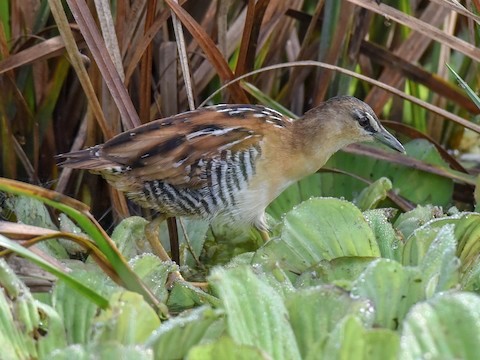
Yellow-breasted Crake. (Embalse Teneria, Pinar del Río, Cuba; February 24, 2019.) © Arco Huang
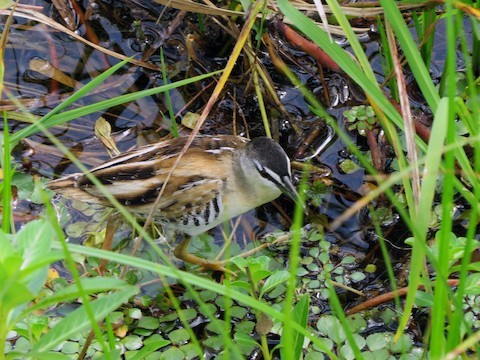
Yellow-breasted Crake, view from above showing blackish cap. (Caño Negro Wildlife Reserve, Costa Rica; July 2, 2016.) © Daniel Matamoros
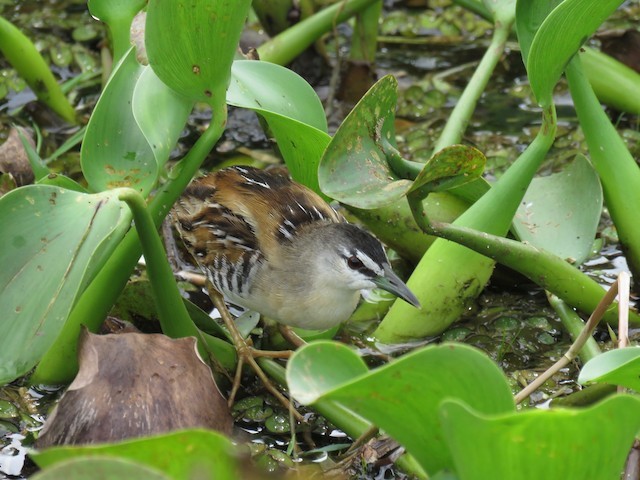
Yellow-breasted Crake. (El Cortijo del Lago, Lago Yojoa, Honduras; October 16, 2016.) © John van Dort
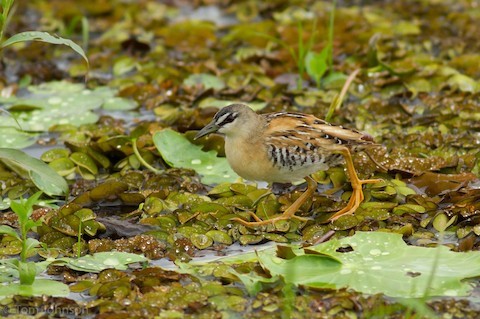
Yellow-breasted Crake, showing large yellow-orange legs and feet. (Caño Negro Wildlife Reserve, Costa Rica; January 17, 2015.) © Tom Johnson
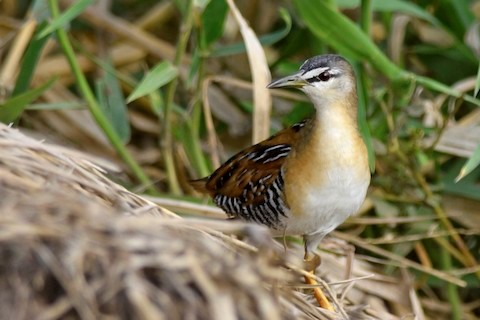
Yellow-breasted Crake. (Medio Queso Wetlands, Los Chiles, Costa Rica; March 10, 2019.) © Daniel Irons
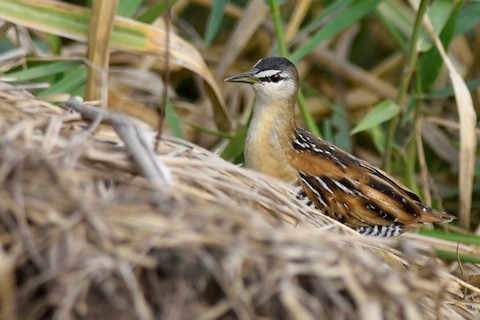
Yellow-breasted Crake. (Medio Queso Wetlands, Los Chiles, Costa Rica; March 10, 2019.) © Daniel Irons
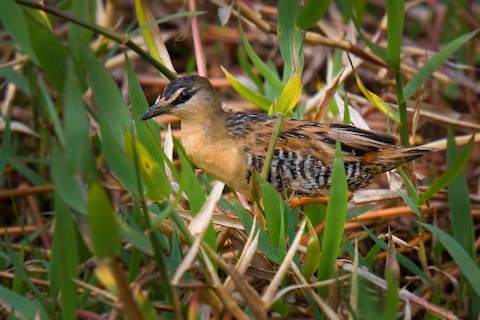
Yellow-breasted Crake. (Lagoa do Descoberto, Distrito Federal, Brazil; November 26, 2019.) © Marcelo Telles

Yellow-breasted Crake. (Tanquã, Piracicaba, São Paulo, Brazil; August 29, 2019.) © Ian Thompson
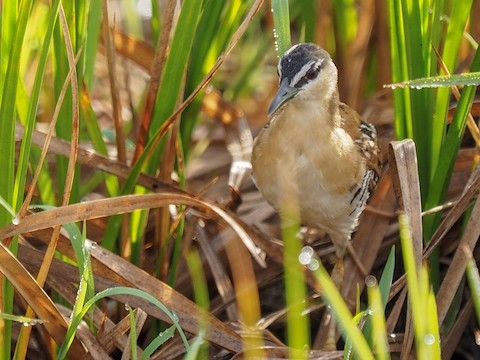
Yellow-breasted Crake. (Embalse Teneria, Pinar del Río, Cuba; February 24, 2019.) © Arco Huang

Yellow-breasted Crake. (Medio Queso Wetlands, Los Chiles, Costa Rica; August 11, 2019.) © Randall Jimenez
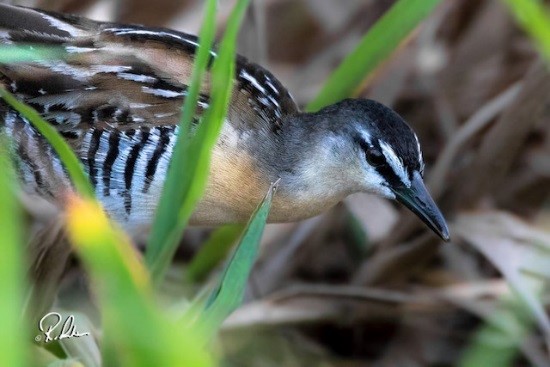
Yellow-breasted Crake. (Aripero Pond, Trinidad; January 27, 2018.) © Richard Lakhan
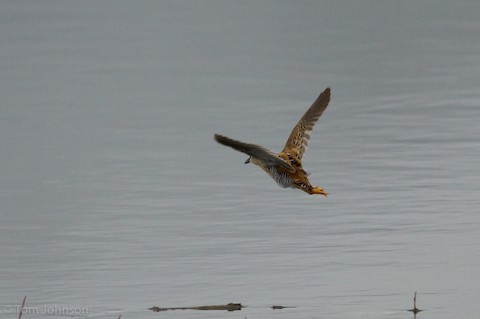
Yellow-breasted Crake in flight, with orange feet trailing. (Caño Negro Wildlife Reserve, Costa Rica; January 17, 2015.) © Tom Johnson

Yellow-breasted Crake, chick. (Caño Negro Wildlife Reserve, Costa Rica; November 26, 2018.) © Chambita Romero
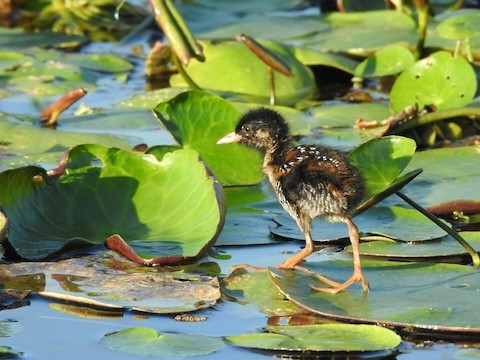
Yellow-breasted Crake, chick. (Caño Negro Wildlife Reserve, Costa Rica; November 26, 2018.) © Chambita Romero
Notes
Polytypic species consisting of five recognized subspecies.
References
Ascanio, D., G.A. Rodriguez, and R. Restall. 2017. Birds of Venezuela. Christopher Helm, London.
Arango, C. 2014. Polluela de Antifaz (Porzana flaviventer). Wiki Aves Colombia. Universidad ICESI. Cali. Colombia. http://www.icesi.edu.co/wiki_aves_colombia/tiki-index.php?page_ref_id=1351. (Accessed August 28, 2017.)
BirdLife International. 2016. Hapalocrex flaviventer. The IUCN Red List of Threatened Species 2016: e.T22692720A93366627. https://dx.doi.org/10.2305/IUCN.UK.2016-3.RLTS.T22692720A93366627.en. (Accessed September 27, 2020.)
eBird. 2020. eBird: An online database of bird distribution and abundance. Cornell Lab of Ornithology, Ithaca, N.Y. http://www.ebird.org. (Accessed September 27, 2020.)
Fagan, J., and O. Komar. 2016. Peterson Field Guide to the Birds of Northern Central America. Houghton Mifflin Harcourt, New York.
ffrench, R. 2012. A Guide to the Birds of Trinidad & Tobago (Third Edition). Cornell University Press.
Garrigues, R., and R. Dean. 2014. The Birds of Costa Rica: A Field Guide (Second Edition). Cornell University Press.
Howell, S.N.G. and S.W. Webb. 1995. A Guide to the Birds of Mexico and Northern Central America. Oxford University Press, Oxford.
Kirwan, G.M., A. Levesque, M. Oberle, and C.J. Sharpe. 2019. Birds of the West Indies. Lynx Edicions, Barcelona.
Latta, S., C. Rimmer, A. Keith, J. Wiley, H. Raffaele, K. McFarland, and E. Fernandez. 2006. Birds of the Dominican Republic and Haiti. Princeton University Press.
McMullan, M., and T. Donegan. 2014, Field Guide to the Birds of Colombia (Second Edition). Fundación Proaves de Colombia, Bogotá.
Raffaele, H., J. Wiley, O. Garrido, A. Keith, and J. Raffaele. 1998. A Guide to the Birds of the West Indies. Princeton University Press, Princeton, N.J.
Ridgely, R.S., and P.J. Greenfield. 2001. The Birds of Ecuador, Volume II: Field Guide. Cornell University Press.
Ridgely, R.S., and J.A. Gwynne. 1989. A Guide to the Birds of Panama (Second Edition). Princeton University Press.
Ripley, S.D. 1977. Rails of the World: A Monograph of the Family Rallidae. David R. Godine, Publisher, Boston.
Schulenberg, T.S., D.F. Stotz, D.F. Lane, J.P. O’Neill, and T.A. Parker. 2007. Birds of Peru. Princeton University Press.
Taylor, B., and B. van Perlo. 1998. Rails: A Guide to the Rails, Crakes, Gallinules, and Coots of the World. Yale University Press.
Taylor, B., and E. de Juana. 2018. Yellow-breasted Crake (Hapalocrex flaviventer). In Handbook of the Birds of the World Alive (J. del Hoyo, A. Elliott, J. Sargatal, D.A. Christie, and E. de Juana, eds.). Lynx Edicions, Barcelona. https://www.hbw.com/node/53668. (Accessed May 17, 2018.)
van Perlo, B. 2009. A Field Guide to the Birds of Brazil. Oxford University Press.
Vilella, F.J., J.A. Cruz-Burgos, and M. López-Flores. 2011. Nesting Biology of the Yellow-breasted Crake (Porzana flaviventer) in Puerto Rico. Waterbirds 34:363-368.
WikiAves, Sanã-amarela, http://www.wikiaves.com.br/sana-amarela. (Accessed September 27, 2020.)
Xeno-Canto. 2020. Yellow-breasted Crake – Porzana flaviventer. https://www.xeno-canto.org/species/Porzana-flaviventer. (Accessed September 27, 2020.)
